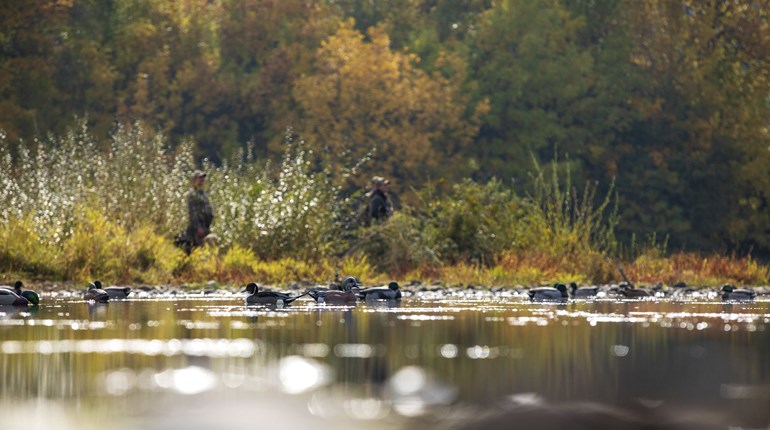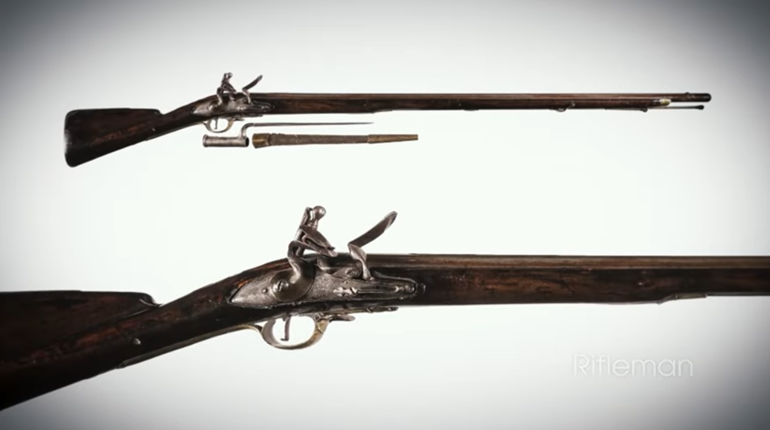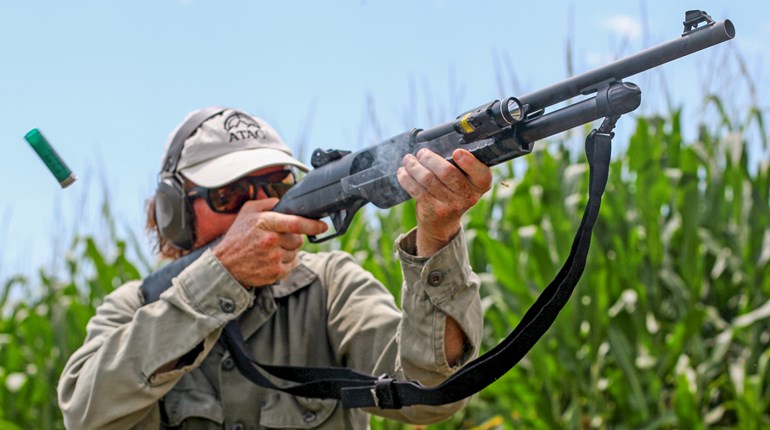
I discovered the importance of a good-quality holster the hard way. Money was tight when my wife and I were starting out, so I skimped on a holster for my Smith and Wesson .44 Magnum. To get by for the time being I bought an “el cheapo,” you know what I mean. I was hunting feral hogs one morning when I jumped across a water hole. Landing on the rock I was aiming for, with all the stealth and agility of a mountain lion stalking its unsuspecting prey, I heard a distinct splash right behind me. Yeah, my aerobatics had set my sixgun free, and into the cold, clear water of the little desert stream it went. Luckily it wasn’t too deep and I was able to fish my gun out...but that was the lastill-fitting holster I ever bought for my guns. I prefer good, solid leather holsters. (I’m not bashing synthetic holsters; they can be very effective. This is just my preference.) But not all leather holsters are created alike, so let’s discuss the strong points of a fine leather holster for your handgun.
Thickness
A good holster is made of thick, rigid leather much like that of quality saddle skirt. All of my holsters are made from the hide of cattle. You can also have a leather holster covered with skin from whatever critter makes you happy. I have seen some excellent holsters made from horse hide leather as well.
Look for the welt
A quality holster will have a welt sewn between where the piece meets together. The welt, made from a strip(s) of thick leather, is glued and stitched at the holster’s ends to add strength and rigidity to the holster.
Gun fit, upside down
I once read somewhere that a quality holster will hold the gun with enough fit that you can turn the holstered handgun upside down, and it will remain shucked. Now, I know you don’t need me telling you to only test this theory with an empty firearm, over the soft couch or bed! Truth is, some of mine do, some don’t. This does not detract from the quality of the piece in my mind; a retention device’s purpose in life is to keep my gun in the holster until I want it out. More on this in a bit.
Belt fit
Order your holster to fit the specific width belt you will wear with it. I prefer 1.75-inch width belts, but many folks wear 1.5-inch. It’s your call. Same goes if you are planning on wearing your holster on a cartridge belt. If it's 2.25, 2.5, or 3 inches wide, get the holster made to fit it. Doing so holds the holster in place when drawing and while you are in motion. It is highly annoying, not to mention a bad idea, to have your holstered hogleg sliding back and forth like a mop bucket on a boat deck.
Retention devices
It’s best to have a holster with some form of retention device that securely holds the gun in place. There are many to choose from. The hammer thong is simply a leather strip or string that is snugged up to the hammer of a revolver. It holds the gun in place and is slipped off the hammer prior to drawing. A button strap is another good option: It keeps the gun in place and can be unsnapped and pulled up or down through the belt, out of the way when not needed. The thumb break is another choice, and I have carried a holstered auto-loader many a rough mile in such a holster. Some holsters have a screw that is tightened, or loosened through a thick, rubber washer that puts tension on the holstered gun. All of these retention methods hold on to the handgun, so just pick the one that best suits you.
To line, or not to line
I’m not sure how much of a difference a lined holster makes. That is a soft leather addition to the inside of the holster. I suppose in theory it might add a slight bit of friction, holding the gun a little more securely, and could possibly protect a blued gun’s finish, if kept clean and free of dust. To my eye the lining does dress a holster up a bit. However, most of my holsters are not lined.
Carving, stamping, and rawhide lace
Another personal preference. Carving is fancy and time-consuming, and therefore expensive. Basket-weave design is one of my favorites, and many other varieties like fish scale and border stamping are available. Most of my holsters are plain leather, but I’m a plain vanilla sort of guy.
The best holsters are sewn together with quality thread. You can also have a holster made by some makers that is laced together with rawhide, a very rugged and eye-catching method.
Holster style, color, stamping, carving, retention devices are all things of preference and personal taste. For me, the Threepersons style holster, originally designed by the famous border lawman, Tom Threepersons, does everything I need a holster to do with streamlined efficiency. An equal is the old Number 5 style and the simple Shuck. These holsters are minimal in design, leaving off any leather that is not needed. That’s my preference...if a full-blown Buscadero rig for your snubby makes you happy, then by all means, get it!
I reached out to Mike “Doc” Barranti, an expert in gun leather-craft, to see what his thoughts are on factors that make up a solid holster, here’s what Doc has to say.
As a holstermaker, I have pretty strong feelings about what makes a “GOOD” holster. Sure, some of these ideas are just my own personal preferences, which means they are mere opinions. Many of my thoughts were formed with input from the likes of Elmer Keith and Skeeter Skelton; two icons whose opinions influenced the gun, holster and ammunition industries for decades, and to some extent, still do today.
When it comes to gunleather, just like everything in life, you get out of it what you put into it. Quality materials are as important as a well-thought-out holster design. Without either, it doesn’t matter how much talent or effort the maker puts into the holster. Quality materials in hand, the next thing is holster design. This is where you can really see the difference from one maker to another. A maker who knows his stuff will create a design that is comfortable, functional AND aesthetically pleasing. A word on holster lining: Skeeter wrote that he didn’t care for a lined holster, and Elmer carried his most prized sixgun, the No.5, in an unlined holster. My thoughts on lining are if you are building a presentation style rig, then go with lining.
Holster design to me is a combination of Form Follows Function, Minimalist Design and Aesthetics. Elmer and Skeeter wanted the least amount of leather wrapped around their guns as possible. This keeps the bulk and weight of the rig down, as well as minimizing the amount of space the rig takes up on your belt. I like holsters that, well, look like a holster! They should also be visually appealing. Razor straight lines and sharp angles are a turn off, while eye pleasing curves that flow around the rig just look right, not just on the front of the holster, but the back of it too. A welt, whether partial or full length, allows the holster to be cut slimmer (there is that minimalist thing), and when made properly, aid in gun retention with friction by actually pressing against the frame or trigger guard. I like an open toe holster, as this shortens the overall length of the holster; something to consider when carrying concealed. The belt loop should be more than just a folded over afterthought. It should be shaped and fitted to the size belt you wear to prevent shifting, and sufficiently wide enough to spread the weight of the gun.
In the end, buy the best holster you can afford, chances are it’ll serve both you and your handgun well for many years, if not a lifetime.







































